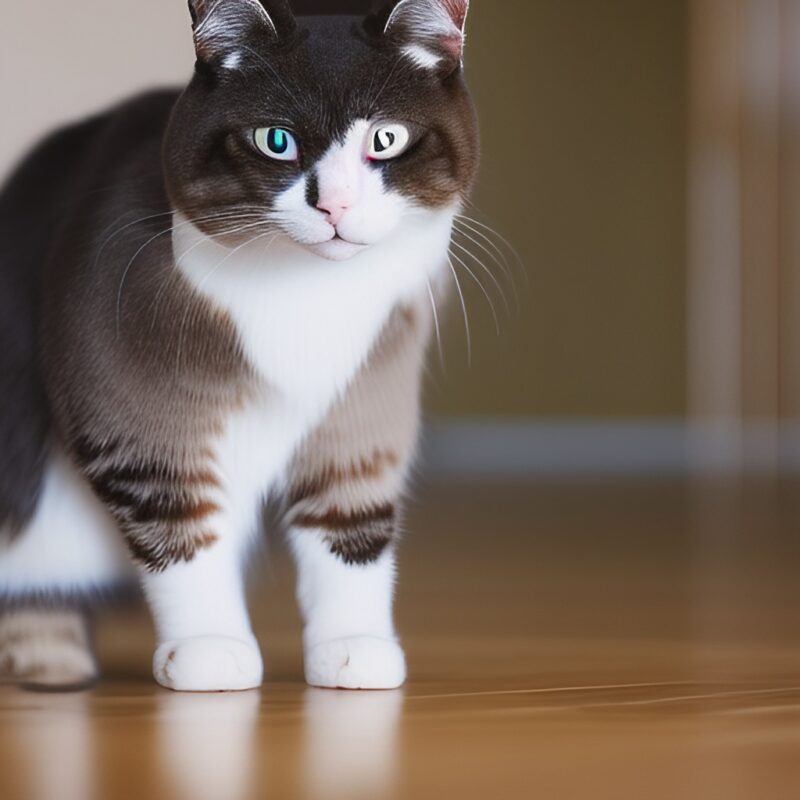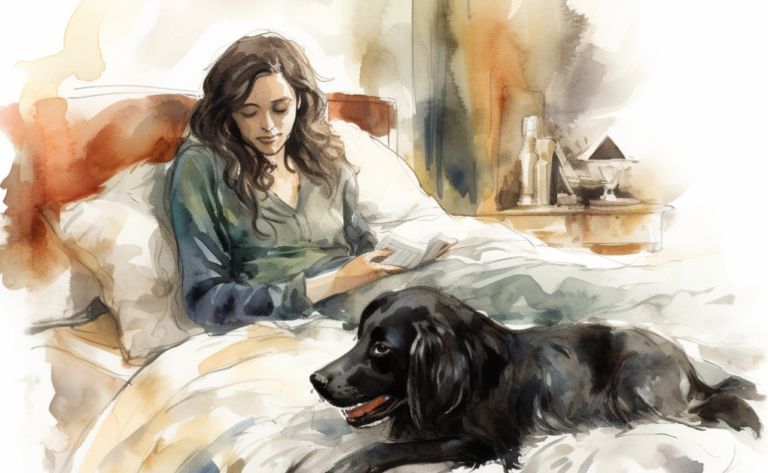Through your Pet’s Eyes
Introduction
One bright sunny day, while watching her dog, Luna, and her cat, Whiskers, play in the garden, Emily found herself wondering what the world looked like through her pets’ eyes. Fascinated by the possibility of seeing life from their perspective, she embarked on a quest to learn more about how her beloved companions perceive their surroundings.
When you look at the world, you take the lovely colors and impressive range of shades, tones, and hues for granted. But how does your pet’s eyes see the world? As it turns out, dogs have far different eyesight than human eyes. Pets can enjoy superior nighttime vision thanks to a particular structure called rods and cones in their eyes that allow them to be well-adapted to darkness.
What are Rods and Cones in Your Pet’s Eyes?
Most mammals, including humans and cats, have two types of photoreceptor cells in their eyes to help see the light — rods and cones. Rods detect only shades of gray but can see better in low light. Cones detect color but require more light to do so. For example, humans have three diverse color cones that allow us to see a wide range of colors, while cats only have two, allowing them to see blues, yellow, and greens.
How Do Dogs See?

Our furry friends are careful observers of the world around them—most notably, dogs. They take in their environments through intense bursts of activity intermixed with periods of rest and contemplation. However, when it comes to vision, there’s much dispute about what a good old-fashioned pup can see. The consensus, however, is that canine eyesight isn’t quite like that of humans—dogs don’t see all the colors we do.
Dogs rely on other senses, such as smell, touch, and sound, instead of color for cues. The structure of a dog’s eye gives it a wider field of view and allows for better peripheral vision — meaning it can distinguish more movement feet away. That relies on the long, oval-shaped retina having more rod cells than cone cells, so dogs can recognize more through motion rather than direct visual cues. Dogs typically have 20/75 visual acuity (human sight generally is around 20/20), but certain breeds may have better eyesight.
Dogs also have a third eyelid that helps protect their eye from foreign objects, debris, or debris that may cause irritation or infection. This third eyelid also helps keep the eyeball moist and prevents it from drying.
How Do Cats See?
Cats have a unique composition of rod and cone receptors in each eye, giving them acute night vision. In addition, the tapetum lucidum is the reflecting layer at the back of their eyes that magnifies light by reflecting it off the eyes for extra sight in the dark.
Cats can focus on nearby prey up close but must become more adept at long-distance sightings due to their hunting instincts. The combination of these two abilities gives cats one of the most efficient nighttime vision, making them perfect nocturnal hunters — hence why we’re so scared when they creep up on us without being noticed!
Unlike humans, who take several seconds to fully adjust from a bright light environment to a murky one, cats take less than a second to transition and make out items clearly in darkness or even moonlight with greater clarity than human sight.

Why Do Cats Have Slit Pupils?
Have you ever noticed that cats have vertical slit pupils, while humans and other animals have round pupils? What’s the significance of this unique feline trait?
Cats have slit pupils for two reasons: to help them see better in low light and protect their eyes from direct sunlight.
Slit pupils are vertical rather than round, like the eyes of humans and many other animals. This shape reduces the amount of light that enters the eye, allowing cats to focus better on objects clearly when there is hardly any light. In addition, this unique design gives cats superior night vision and an edge during their nightly hunts for prey.
At the same time, cats’ slitted pupils also protect their eyes from bright, direct sunlight. In addition, the slit confines excess sunlight, which can overload a cat’s sensitive eyes while providing enough light to maintain clear vision. Cats also have a third eyelid that helps shield their eyes from additional sun exposure outdoors.
Can Pets See Colors?
Both dogs and cats can see colors, but their color perception differs from humans. Contrary to popular belief, dogs can see some color in the spectrum, but it’s much more limited than our own: They can distinguish between blues and yellows but can’t see reds and greens. Dogs also have much better low-light vision because they may have up to five more cones than humans.
Additionally, they’re nearsighted and lack peripheral vision on the sides; this explains why they often startle when something surprises them from its corners or edges. However, their nearsightedness is compensated by their wider field of vision, giving them good peripheral awareness at 240 degrees—a panoramic sight that we cannot compare with ours!
When it comes to low-light environments like nighttime, dogs have an advantage. This is because their eyes contain a membrane in the back called a tapetum lucidum, which helps reflect incoming light inside the eye and gives them enhanced night vision capabilities.
On the other hand, cats have a higher color perception and can see in shades of green, blue, yellow, and gray. Contrary to popular belief, dogs can see some color in the spectrum, but it’s much more limited than our own: They can distinguish between blues and yellows but not reds and greens. Dogs also have much better low-light vision because they may have up to five more cones than humans.
Cats have better night vision than humans due to a higher number of rod cells in their retinas, which are more light-sensitive. Their visual acuity is also 20 times greater than our own. As a result, they can see much better in darkness and dim light but don’t do as well during the day as humans do since they have fewer cones.
As such, their ability to differentiate colors is significantly reduced, and they can only detect blues, yellows, and greens – they won’t be able to distinguish between reds, oranges, and purples like humans do. Cats also possess a larger field of vision than us, 200 degrees instead of 180 for humans, and this means that cats can see behind them up to almost 180 degrees while we must turn our heads to gain new senses of perception.
Night Vision in Cats & Dogs
Cats and dogs have pretty different night visions. Cats, for example, have much better ideas in the dark than dogs. This is due to their superior eye anatomy. Their slitted pupils allow more light to enter their eyes and are much better adapted to dim lighting environments than a round-pupil dog’s eyes. Cats also have an extra layer of cells at the back of their eyes that capture even light and enhance their night vision ability even more.
Cats can see in conditions six times darker than humans, allowing them to identify objects as far away as 50 feet with clarity and detail. Dogs don’t benefit from such a vision in the dark, only being able to see about three times less effective in dim lighting situations. Additionally, cats possess a tapered field of view regarding nighttime navigation, which allows them superior peripheral vision and helps them detect any potential prey on the move or any lurking predators stalking their territory.
Frequently Asked Questions
Disclaimer: The information provided on this veterinary website is intended for general educational purposes only and should not be considered as a substitute for professional veterinary advice, diagnosis, or treatment. Always consult a licensed veterinarian for any concerns or questions regarding the health and well-being of your pet. This website does not claim to cover every possible situation or provide exhaustive knowledge on the subjects presented. The owners and contributors of this website are not responsible for any harm or loss that may result from the use or misuse of the information provided herein.







